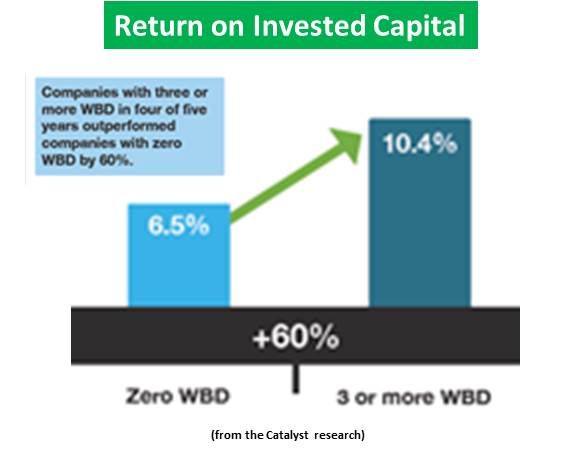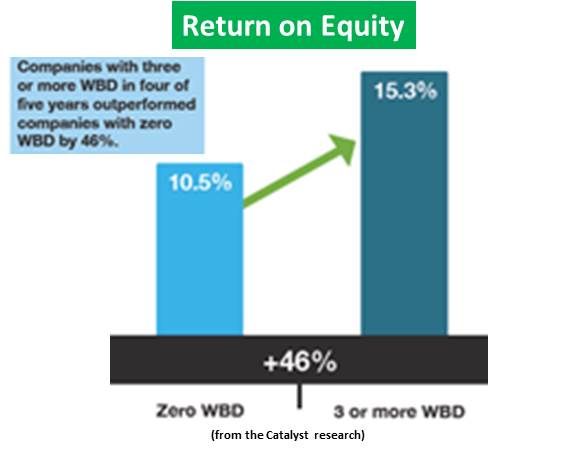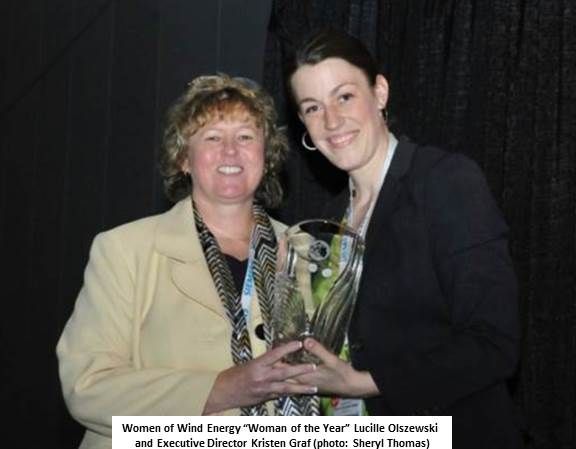Women are under-represented in wind and the other renewable energy industries, according to Kristen Graf, Executive Director of Women of Wind Energy (WoWE). She believes progress in renewables may depend on correcting that.
“Statistics are difficult [to come by] because there is little historic data,” Graf said, “but preliminary results from an as-yet-unreleased NREL study show women make up approximately 20 percent to 25 percent of the wind workforce. Most work in administrative and human resources roles. I don’t think we have to hit a 50 percent line, but I think we will be better off if the workforce is more reflective of the overall long-term customer base.”
It's not a ‘Can women have it all?’ question, Graf said. “If it were, it would be across all industries. But the reality is that those numbers are much more the case in the high-tech industries.”
About 41 percent of lower-level STEM jobs are held by women, Graf said, referencing recent Harvard Business Review (HBR) numbers. But by the time women in the industry hit their mid-to-late-30s, some 51 percent leave, and very few ultimately end up at the very top.
The HBR piece cites five reasons for this, Graf noted, including:
- Hostility in the workplace
- The isolation of being a lone woman among men
- The disconnect between workplace demands and women’s preferred modes of dealing with problems and conflicts
- The added domestic responsibilities that many women have
- The lack of clear advancement paths

Graf recounted an interesting anecdote about Bill Gates. He was asked by Saudi Arabians how their country could become a leader in high tech, and he answered that their country isn't engaging 50 percent of its potential workforce. If you are not tapping 100 percent of your talent, Gates said, you will never get there.
Graf added that Warren Buffett recently identified the increasing presence of women in business as the primary factor that makes him optimistic about the future of the U.S. economy.
What these two men are saying, Graf observed, is that having women in an organization makes for a more successful organization. “Catalyst, which studies women in business, did a study comparing the performance of Fortune 500 companies with no women on their board and companies that have three or more women board members,” Graf said. “The ones with more women showed significantly better returns on sales, invested capital and equity.”
Graf went on to discuss several of Catalyst's conclusions. The firm found that the presence of women at high levels improved average social perceptiveness (i.e., the ability to read non-verbal cues); improved the balanced participation in the decision-making process; and increased the proportion of women throughout the organization.
“Women’s presence makes the first two more likely, because the culture tends to condition women to be good at [these tasks],” Graf said.

WoWE’s mission, Graf said, is the education, professional development and advancement of women in the industry. What that is intended to achieve, she added, is to bring more women to the table, build a more diversified wind industry workforce and, as a result, build a more robust renewable energy economy.
Graf, 34, trained as an engineer with the intention of helping build game-changing renewable energy technology. But, she said, technology is not the only obstacle. Many other pieces, including the markets, the policy, the public understanding and perception of renewable energy, are just as significant.
“This industry, right now especially, needs innovative policy and financing methods. That is going to take all the talent we can find and the best ideas that are out there,” Graf said. “Without a doubt, the greater presence of women is a solution.”
It is not that women have a particular perspective, Graf said, but “chances are good that they have some sort of different perspective.”
WoWE’s 2013 Woman of the Year was meteorologist Lucille Olszewski. During 30 years as a wind site prospector and developer, Olszewski assessed over 9,000 megawatts of planned capacity and sited over 14,000 wind turbines. She also pioneered radio telemetry systems for meteorological data collection and was the first to use cell phone technology for data collection.
The 2013 Rising Star was University of Colorado Assistant Professor and National Renewable Energy Laboratory researcher Dr. Julie Lundquist. Lundquist’s study of the effects of atmospheric stability and turbulence on wind forecasting and turbine performance revealed important new affects in the atmospheric boundary layer. It is work that goes beyond academia into areas that may revolutionize wind resource assessment.




